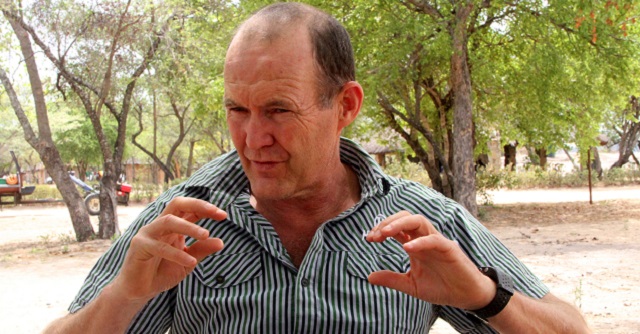
The Sunday News


At the time of colonisation the institution of chiefs faced severe onslaught from the colonisers as a result of its perceived and real roles within the Ndebele State. The king, Lobengula Khumalo, had been sent packing after his attempted capture across the Shangani River in December 1893 aborted. The Ndebele State was organised into regiments/villages which were led into battle by chiefs and military commanders, in some instances.
There is need perhaps to clarify the difference between regiments and villages. Of course the one difficulty that we face is one of language. Language influences thought processes. It is the vehicle of meaning.
When we thus use a foreign language such as the English, we stand to lose out with regard to thought interpretation. A village (ixhiba or umuzi) such as uMzinyathi, consisted of both men and women. It had a geographical location and was geographically dispersed unlike the royal town which was nuclear. We do know that uMzinyathi initially was located on the upper reaches of the UMzingwane River. It was thus both an administrative unit and at the same time, a military unit. There were no separate military barracks except at the time of initial conscription when young men underwent ugalo lwesizwe.
Ndebele military traditions were such that women did not take part in war. That function was left to the male folk, a practice that tipped scales in their favour in terms of possession of political and economic power. Within the geographically dispersed village there was the central settlement where the chief and his household lived.
Within this fairly large chiefly village where sometimes royal wives lived, there were armouries where weapons were kept.
Ox-hide shields, spears (the three types: usiba, inzala and umdikadika/isijula/ijozi. Appointed men from time to time went around checking the levels of weapons in armouries in the villages. If they were found to be low, word was given to the shield makers (abasiki bezihlangu) and spear makers, (abakhandi bemikhonto) to manufacture some more.
When the call to arms was made, it was the male component of the village that responded and constituted an impi, the raiding or defending party. There was a song which went like:
Impi kayihlome,
Ho nansi impi,
Impi kayihlome,
Ho-wo singabokwenzani?
Then uMzinyathi men would leave their village as an impi, having been conscripted into an ibutho earlier on, constituted themselves into the male regiment and undertook military training, (ugalo lwesizwe). They headed for the royal capital town from whence they were dispatched after undergoing various rituals. Usually, it was this male ibutho component or ixhiba/umuzi that got a heroic name such as iNtunta (ethutha izinkomo labantu), iNsukamini, iHlathi etc.
The chiefs and their male followers, the soldiers were the defenders of the state. Indeed, it was them who stood to fight against the white invaders both in 1893(Imfazo I) and 1896(Imfazo II). If invaders were to retrench their rule, it was clear they had to deal with the institution or build it around amenable characters who accepted their rule. During the colonial onslaught some of the villages, especially the bigger ones, were torched. Food reserves went up in smoke and there was general hunger. It was the same in 1896. Mission stations such as Hope Fountain and Inyathi of the London Missionary
Society fed the starving Ndebele.
However, the important point here is that some chieftainships were abolished at the time of occupation.
These were never resuscitated again during the colonial era. Imbizo, located near Koce River was one of those that were torched and the chieftainship was never resuscitated. Imbizo had been part of isiphika, the protective hood of villages, for the last Ndebele royal town, KoBulawayo. The reason for its destruction was its role in the 1893 war. Bulawayo itself was never resuscitated. We should remember that Magwegwe Fuyane was the chief of Bulawayo.
As the crack regiment, iMbizo took up arms and fought the advancing column of invaders calling themselves the volunteers (amavolontiya). Chief Manondwane Tshabalala’s iNsukamini regiment had engaged the enemy on 25 October 1893 at Bhonko, where the Harare-Bulawayo road crosses the Shangani River. At the time, iNsukamini had been deployed to the Gweru area to ensure the 1890 invaders were kept at bay. Chief Manyakavula Masuku’s aMatshtshe had similarly been moved from Umzingwane River area to somewhere near West Nicholson. It was then that iMbizo, uBhiyozo ozibunu zibomvu, iNsukalitshone, iNtamo yenkunzi, said to the walloped iNsukamini, “Liqhuba abafo sengathi liqhuba umthimba. Sivumele Nkosi siyekubamba ngamadevana sizelimela abantwabethu.” You accompany these enemies as if you are accompanying a wedding party, allow us our dear king to take them on and come back to plough for our children. Of course iMbizo had not reckoned with the Maxim gun (isigwagwagwa) which broke their knees.
Indeed, under the command of uNdindikuyasa, Mtshane Khumalo iMbizo followed the armed volunteers who were promised gold claimed and land for their role in destroying the Ndebele State. At the Battle of Mbembesi (Gadadi) the two adversaries engaged each other. The Maxim gun won the day. It was clear to the king that it was all over. He fled to the north. Imbizo followed him to put up a spirited military resistance across the Shangani River. Imbizo, iHlathi, iSiziba iQandalengwenya fought hard and killed all the white soldiers under the command of Major Allan Wilson.
All the participating regiments never lived beyond the Anglo-Ndebele War of 1893. Those that survived were met with smouldering ruins of what once were their villages. Imbizo, iHlathi, iSiziba, iQandalengwenya had their chieftainships painfully terminated. Soon after conquest land alienation was not immediately enforced. Emphasis then was on mineral exploitation rather than agricultural development. The majority of the people continued to live on ancestral land. Of course there were some that fled across the Zambezi River never to return. They joined the Lozi people in Zambia.
As reported earlier Chief Manondwane Tshabalala, crest fallen and bruised, continued living in the Gwelo (now Gweru) area.
The Gwelo Native Commissioner, knowing the role that iNsukamini and its leader had played jn resisting colonisation, poisoned Chief Manondwane Tshabalala who however, managed to get to his home to tell the sad story to his wives. He was gone with the memory of iNsukamini of isathiyane sakoMalaba fame, that epitome of gallant resistance to colonialism. A primary school in Nkulumane Township in Bulawayo is all that remains in his honour. Outside Gweru there is a place and dam named after the regiment. Another place south of Bulawayo is named after the regiment and is a terminal for electricity.
Equally, iMbizo has faded from memory. A township and school in Kwekwe continue to raise the flag for the regiment that fought gallantly both at Gadadi and Pupu. Sadly, there is no roll call for the war dead at the two sites. Instead, it is names of the white war dead that are remembered and have, in their honour, a monument: the Allan Wilson Memorial built on the desecrated Malindandzimu (erroneously given as Malindidzimu) Hill within the Matobo Hills. The good news though is that what formerly was Llewellin Barracks outside Bulawayo was aptly named iMbizo, in honour of the Ndebele crack regiment.
An administrative district in Metropolitan Bulawayo Province is named after the crack regiment. Sadly though, the heroic name exists alongside that of Reigate District, the name of one of the first two farms that were carved out soon after conquest.
The other farm was named uMvutshwa, after one of King Lobengula Khumalo’s satellite towns to the north-east of Bulawayo where spears were manufactured.



